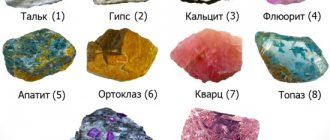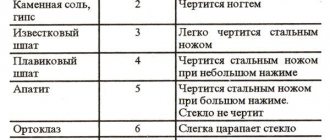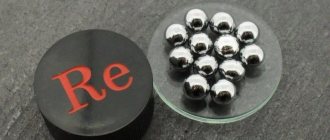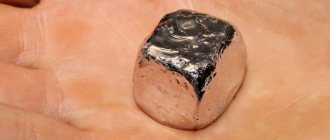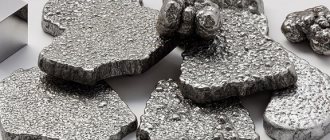Metals together with alloying additives form the strongest alloy. First of all, this concerns hardness. In addition, they differ in a number of indicators, including heat and electrical conductivity. Strong alloys are in demand in industry. This is especially true for aircraft construction, where lightness is required along with strength. The automotive and shipbuilding industries need strong alloys.
Titanium
Durable alloys and natural metals
Alloys are combinations of different metals. The need to obtain a variety of qualitative characteristics of metals, including strength, led to the emergence of various alloys. One important alloy in this sense is steel, which is a combination of iron and carbon. So, what metals are considered to be the strongest on Earth?
Since so many factors must be taken into account to determine the strength of a metal, it is difficult to unambiguously order metals from the “strongest” to the “weakest”. Depending on which property is considered the most important in each specific case, the distribution of strength forces among metals will develop.
The hardest materials on Earth
The most durable material in the world, which is harder than diamond, is polymerized fullerite. This material can easily scratch a diamond, as easily as if it were not a precious diamond, but ordinary plastic.
This material is a structured crystal, the nodes of which consist of whole molecules rather than small atoms.
Lonsdaleite is also considered a strong material. This is a modification of allotropic carbon, which is close in hardness to diamond. This material was extracted from a meteorite crater. The origin of the material is graphite.
The third position in the hardness ranking is firmly occupied by wurtzite boron nitrite. The crystalline structure provides a high degree of strength to this material.
Nanostructured cubonite, or kingsongite. The unique capabilities of this material have ensured its frequent use in industry.
Carbon-boron nitrite occupies an honorable fifth position in our ranking. The main components of this material are boron atoms, as well as carbon and nitrogen.
Steel and its alloys
Steel is a durable alloy of iron and carbon, with the addition of other elements such as silicon, manganese, vanadium, niobium, etc. Thanks to different alloying systems for steel, it is possible to obtain a completely different set of properties of new alloys.
Thus, high-carbon steel - an alloy of iron with a high carbon content - is strong, relatively cheap, durable, and easy to process. Among the disadvantages, it is worth noting low hardenability and low heat resistance, which makes carbon steel vulnerable in an aggressive environment.
Areas of application: various tools, machine parts and complex mechanisms, and elements of metal structures are made from carbon steel. An important condition for the use of such products is a non-aggressive environment.
An alloy of steel, iron and nickel is one of the most durable alloys. There are several varieties of it, but in general, alloying carbon steel with nickel increases the yield strength to 1420 MPa, and at the same time the tensile strength reaches 1460 MPa.
Areas of application: Nickel-based alloys are used in the designs of some types of powerful nuclear reactors as protective high-temperature shells to protect uranium rods from corrosion.
Stainless steel is a corrosion-resistant alloy of steel, chromium and manganese with a yield strength of up to 1560 MPa and a tensile strength of up to 1600 MPa. Like all types of steel, this alloy is highly impact resistant and has an average Mohs scale rating.
Areas of application: due to its anti-corrosion properties, stainless steel is widely used in a variety of fields - the petrochemical industry, mechanical engineering, construction, electric power, shipbuilding, the food industry and for the manufacture of household appliances.
Stainless steel
Stainless steel is a strong, durable newcomer to the jewelry industry. If you want something durable and stylish but don't want to spend a lot of money, stainless steel is a great choice. Signs of wear may appear over time, but the surface can be polished. When it comes to resizing, some jewelers refuse to work with stainless steel because they don't have the right equipment to do it. On the other hand, larger businesses and manufacturers usually have the ability to resize.
Extra hard alloys
Alloys based on tungsten, titanium, and tantalum carbides have a hardness that would be the envy of any Thor hammer.
Titanium is the most popular natural metal in the media and cinema, which is usually associated with super strength. Its specific strength is almost twice as high as that of alloy steels. It has the highest tensile strength to density ratio of any metal. In this indicator, it has surpassed tungsten, but titanium is inferior to it on the Mohs hardness scale. However, titanium alloys are strong and lightweight.
Applications: Titanium and its alloys are often used in the aerospace industry. It is used to make spaceship skin elements, fuel tanks, and jet engine parts. It is also actively used in marine shipbuilding, the construction of pipelines for aggressive environments and as a structural material.
Tungsten, with its highest tensile strength of any naturally occurring metal, is often combined with steel and other metals to create even stronger alloys. The disadvantages of tungsten include its fragility and ability to break upon impact.
Areas of application: tungsten is used in metallurgy for the production of alloy steels and various alloys, in the electrical industry for the manufacture of lighting elements, in mechanical and aircraft construction, in the space industry and the chemical industry. An alloy of tungsten and carbon (tungsten carbide) is used to produce cutting-edge tools such as knives and circular saws, as well as wear-resistant working parts in mining equipment and mill rolls.
Tantalum has three advantages: strength, density and corrosion resistance. It belongs to the group of refractory metals, like tungsten described above.
Applications: Tantalum is used in the production of electronics and heavy-duty capacitors for personal computers, smartphones, cameras and electronic devices in cars.
About metals in nature
Metals are divided into ferrous and non-ferrous. The classic representative of the first type is iron. People of color form a more expensive group.
How metals are produced
Metals do not occur in nature in their pure form. They are contained in ores.
Their production proceeds in the following stages:
- identification of deposits;
- ore mining:
- metal extraction.
The strongest of metals
Strength is the ability of a metal to withstand external loads. The resistance of an element is provided by its internal structure, which is capable of creating internal tension that resists external pressure.
The strongest metals include:
- titanium;
- rhenium;
- beryllium;
- chromium;
- tantalum;
- iridium.
Innovative alloys
There are a number of alloys that appeared quite recently, but have already gained recognition due to their “super qualities” and are actively used in the aerospace field and medicine.
Titanium aluminide is an alloy of titanium and aluminum that can withstand high temperatures and has anti-corrosion properties, but at the same time it is quite brittle and not sufficiently ductile. However, it has found its application in the production of special protective coatings.
An alloy of titanium with gold is another unique material that was developed several years ago by a group of scientists from US universities. The main task facing scientists was to create a material stronger than titanium, which could be used in medicine to produce prostheses compatible with biological tissue. The fact is that titanium prostheses, despite their strength, wear out relatively quickly and have to be replaced every 10 years. But the titanium-gold alloy turned out to be four times more durable than the alloys currently used in the production of prosthetics.
The most durable
Graphene is the material of the future. It consists of a single carbon atom arranged in a triangular lattice. Graphene is the most durable material known to man. It is 200 times stronger than steel.
Graphene is used in the aerospace and automotive industries. This is, of course, not vibranium. But it may well compete in the foreseeable future, when scientists begin to fully exploit the full potential of this thin and ultra-strong material.
Found a violation? Report content
Tantalum
Tantalum is one of the three strongest elements on earth. It is characterized by a gray-metallic color with a silvery sheen, high hardness and atomic density. The oxide film that forms on top gives it a leaden tint. Despite its high hardness and strength, this metal is characterized by ductility, and in this quality it is comparable to gold. The metal is refractory, resistant to corrosion and oxidation. It has found active use in metallurgy, construction of power plants, and the chemical industry.
Cobalt
Cobalt is becoming an increasingly popular material. It is very similar in color to white gold, but is much stronger and has a more attractive price. Products made from cobalt have a fairly high scratch resistance and are generally very durable. Cobalt is so strong that resizing is not an option either.
Note: Some of these metals are so strong that only men's rings are made from them because they are extremely difficult to manipulate to change design features or sizes.
Titanium
It is called the metal of the future, since its final place in people's lives has not yet been determined. The man quickly appreciated his best qualities. Titanium is light and high-strength, resistant to high temperatures, has low density, and is resistant to corrosion. Areas of application: aviation technology and rocket industry, shipbuilding. Titanium alloys have great application prospects, but are hampered by their high cost and lack of widespread use.
Iridium
The ranking of the most durable metals in the world is headed by iridium - a silver-white, hard and refractory metal that belongs to the platinum group. In nature, the high-strength element is extremely rare and is often combined with osmium. Due to its natural hardness, it is difficult to machine and is highly resistant to chemicals. Iridium reacts with great difficulty to exposure to halogens and sodium peroxide.
This metal plays an important role in everyday life. It is added to titanium, chromium and tungsten to improve resistance to acidic environments, used in the manufacture of stationery, and used in jewelry to create jewelry. The cost of iridium remains high due to its limited presence in nature.
392 33
